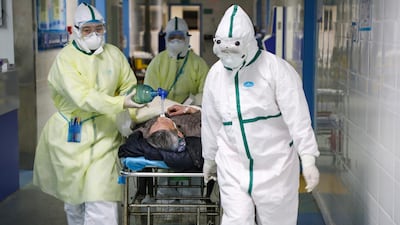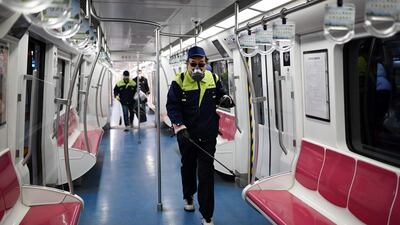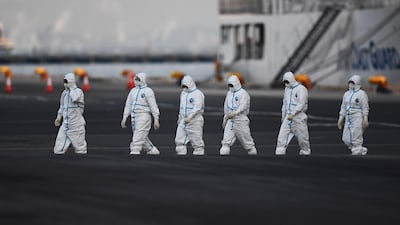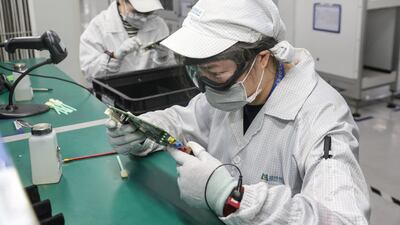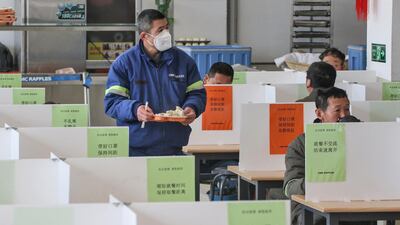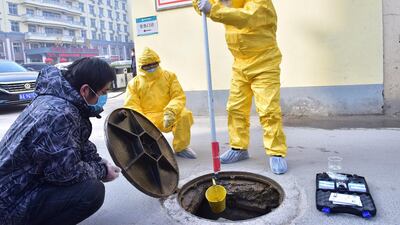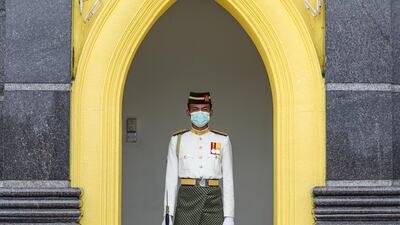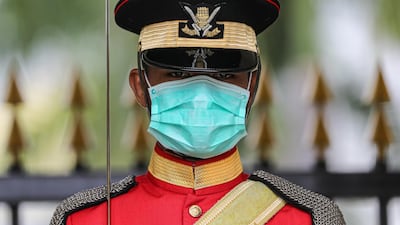Latest: UAE hotel apologises after staff turn away Chinese guests
A Chinese woman has become the first patient in the UAE to recover from coronavirus.
Liu Yujia, 73, contracted the virus in China, then travelled to the UAE, where she began to experience symptoms.
She has since made a full recovery, the Ministry of Health and Prevention said on Sunday.
In a statement carried by state news agency Wam, the Ministry said Liu Yujia, who was treated at an isolation ward from January 23, has “recovered fully and can carry on with life normally.”
Consul General Li Xuhang of China and Dr Hussein Al Rand, assistant undersecretary at the ministry, visited Ms Liu and congratulated her on her return to health.
On Sunday, the Chinese Consul General praised the country’s healthcare system for helping Ms Liu recover.
“The UAE leadership, government and people have demonstrated the true meaning of solidarity with the People’s Republic of China in confronting this latest outbreak,” Mr Li said.
Ms Liu thanked the UAE for the “great attention” she received during her time in hospital and for the care her family continues to receive.
Dr Al Rand said the 2019-nCoV detection test Ms Liu took was negative.
“Individuals diagnosed are receiving proper health care in accordance with leading World Health Organisation standards, with each individual case being monitored until full recovery is attained,” he said.
“This case ... increases hope that other discovered cases in the UAE can also be fully recovered.”
Seven cases of coronavirus have been reported in the UAE. The first four cases were a Chinese family, which included a mother, father, nine-year-old girl and Ms Liu, a grandmother, from Wuhan. A few days later, a Chinese man had the virus diagnosed after arriving in the UAE from the virus-hit Chinese city of Wuhan. The most recent two cases, announced on Saturday, were a Chinese citizen and a Filipino citizen.
Those still suffering from the illness are being cared for under quarantine.
The death toll from China’s coronavirus outbreak soared to 811 early on Sunday as Hong Kong imposed a mandatory quarantine on mainland arrivals to slow the spread of an epidemic that has caused global concern.
The toll exceeded the 774 who died worldwide during the 2002-2003 Sars epidemic.
More than 37,000 people have been infected by the new strain, which is believed to have originated at a market selling wild animals in the central city of Wuhan last year before spreading across China.
What are the chances of recovery?
According to official figures released by the Chinese government, 3,281 patients had been discharged from hospital across the country by the end of Sunday, compared to more than 40,000 total cases.
While the number of recovered patients may seem small in comparison, they are expected to rise significantly in the coming days and weeks.
According to the World Health Organisation, a breakdown of 17,000 cases provided by the Chinese government, 82 per cent of them were classified as mild, with 15 per cent severe and 3 per cent critical.
The vast majority of patients currently suffering with the virus are therefore expected to recover.
The reason for the lag in recovered patients versus total cases appears to be twofold.
First, cases have multiplied quickly – at a rate which has stabilised at around 8 per cent in recent days based on official figures.
And while some people appear to suffer only mild symptoms from the virus and recover relatively quickly, others take a long time to get over the illness.
For example, a study on 138 patients who had been hospitalised as a result of complications from the virus between January 1 to January 28 found that the average time from the first symptom to shortness of breath was five days, and to hospital admission, seven days. However, at the time of the final followup, on February 3, most patients were still in hospital.
An early estimate by the World Health Organisation puts the fatality rate of the new virus around 2 per cent.
However, many researchers say it is too early to say how high it will ultimately be, as an accurate estimate will only be achieved by widespread antibody testing to discover how many people contracted the virus during the outbreak.
And that can only be done later, once it is over.
Scientists suspect the fatality rate is being both under and overestimated.
Benjamin Cowling, division head of epidemiology and biostatistics at the University of Hong Kong told news magazine Quartz the hospital fatality rate was almost certainly being underestimated because many cases were still in hospital and had not yet resolved.
“We think this could be in the range 10 per cent to 30 per cent, which would be similar to the severity of hospitalised cases of Sars and Mers.
“We think the sCFR (symptomatic case fatality risk) is being overestimated because many mild cases are not tested and laboratory-confirmed. We do not have good information on sCFR yet. It will be lower than 2% for sure,” he said.
